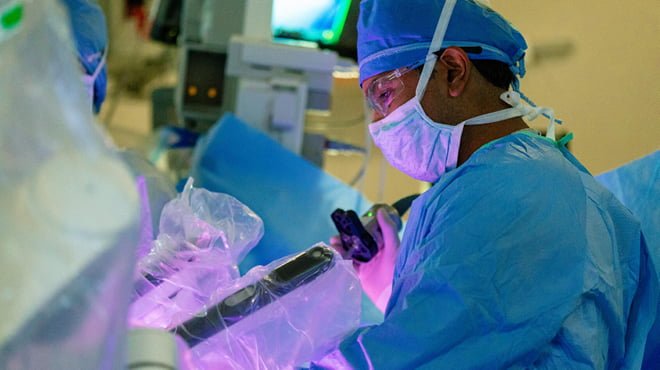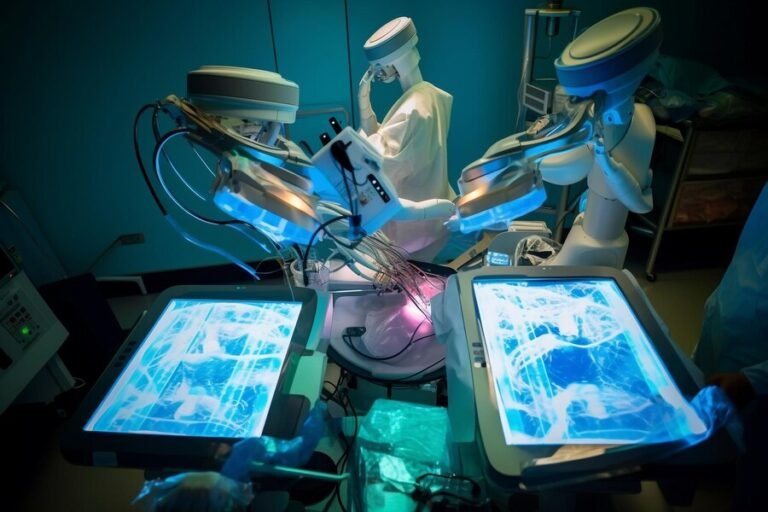Unveiling the Future of Medicine with Robotic Surgery Advancements
In the ever-evolving landscape of modern medicine, one technological advancement stands out prominently, promising a revolution in surgical procedures—Robotic Surgery. With precision and efficiency at its core, robotic surgery has emerged as a transformative force, reshaping the way medical professionals approach complex procedures. In this article, we delve into the nuances of robotic surgery advancements, exploring their impact on patient outcomes, the evolution of technology, and the future possibilities they unveil.
The Evolution of Robotic Surgery
Initially introduced to assist surgeons in performing minimally invasive procedures, the technology has evolved into a sophisticated tool that extends a surgeon’s capabilities. The da Vinci Surgical System, one of the pioneers in robotic surgery, introduced in the early 2000s, paved the way for further innovations.
Early robotic systems provided enhanced dexterity and visualization, allowing surgeons to navigate with greater precision through smaller incisions. Over the years, advancements in artificial intelligence, haptic feedback, and teleoperation have transformed robotic surgery into a comprehensive platform that combines the surgeon’s expertise with the capabilities of a robotic assistant.
The Impact on Patient Outcomes
One of the primary benefits of robotic surgery is its positive impact on patient outcomes. The minimally invasive nature of robotic procedures often leads to smaller incisions, reduced blood loss, and faster recovery times compared to traditional open surgeries. Patients experience less postoperative pain and scarring, contributing to an overall improved quality of life during the recovery phase.
Moreover, the enhanced precision offered by robotic systems minimizes the risk of human error, resulting in fewer complications during and after surgery. Surgeons can navigate intricate anatomical structures with greater ease, making previously challenging procedures more manageable and less invasive.
Applications Across Medical Specialties
Robotic surgery has transcended its initial applications and is now employed across various medical specialties. In urology, the da Vinci Surgical System has become a standard tool for prostatectomies and other urologic procedures. In gynecology, robotic-assisted surgery is utilized for hysterectomies and myomectomies, offering a less invasive alternative to traditional approaches.
Cardiac surgery has also witnessed significant advancements with the integration of robotics. Complex heart surgeries, such as mitral valve repairs and coronary artery bypass grafting, can now be performed with greater precision and reduced trauma to the patient’s body.
Orthopedic surgeons utilize robotic systems for procedures like joint replacements, ensuring accurate implant placement and optimal alignment. The applications of robotic surgery continue to expand, covering an ever-growing range of medical interventions.
Challenges and Controversies
Despite the undeniable advantages of robotic surgery, the technology is not without challenges and controversies. The high cost of acquiring and maintaining robotic systems remains a barrier for many healthcare institutions. Additionally, the learning curve associated with mastering robotic-assisted procedures necessitates comprehensive training for surgeons.
Controversies surrounding the effectiveness and necessity of robotic surgery have also surfaced. Some critics argue that the benefits, particularly in terms of improved outcomes, are not substantial enough to justify the significant financial investment. Others express concerns about the potential overuse of robotic systems, emphasizing the importance of evidence-based decision-making in adopting this technology.
The Future of Robotic Surgery
Looking ahead, the future of robotic surgery holds exciting possibilities. As technology continues to advance, robotic systems are likely to become more compact, user-friendly, and cost-effective. Integrations with artificial intelligence and machine learning are expected to enhance the capabilities of robotic assistants, enabling them to adapt to individual patient anatomy and surgical nuances.
Teleoperation, a concept already being explored, may allow surgeons to perform procedures remotely, expanding access to specialized care in underserved areas. The collaborative potential of robotic surgery, where multiple robotic systems work in tandem under the guidance of a skilled surgical team, opens doors to even more complex and intricate interventions.
Conclusion
In conclusion, the journey of robotic surgery from its early days to the present signifies a remarkable leap in the field of medicine. The advancements in precision, visualization, and overall surgical capabilities have led to improved patient outcomes and expanded the scope of what is possible in various medical specialties. While challenges and controversies persist, the future of robotic surgery appears promising, with ongoing technological innovations paving the way for a new era in healthcare. As we unveil the future of medicine with robotic surgery advancements, the potential for further breakthroughs and enhanced patient care continues to captivate the imagination of the medical community and beyond.







